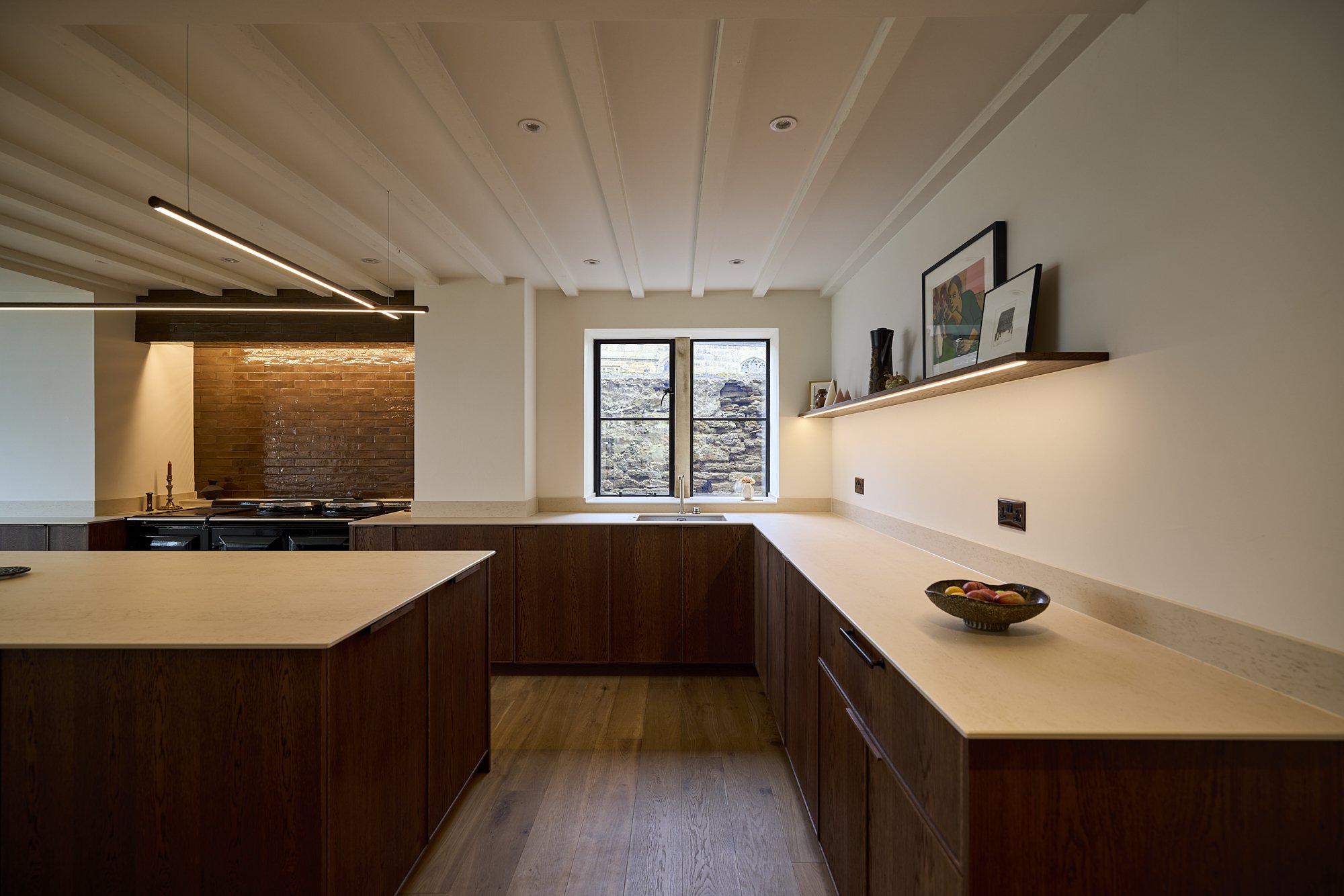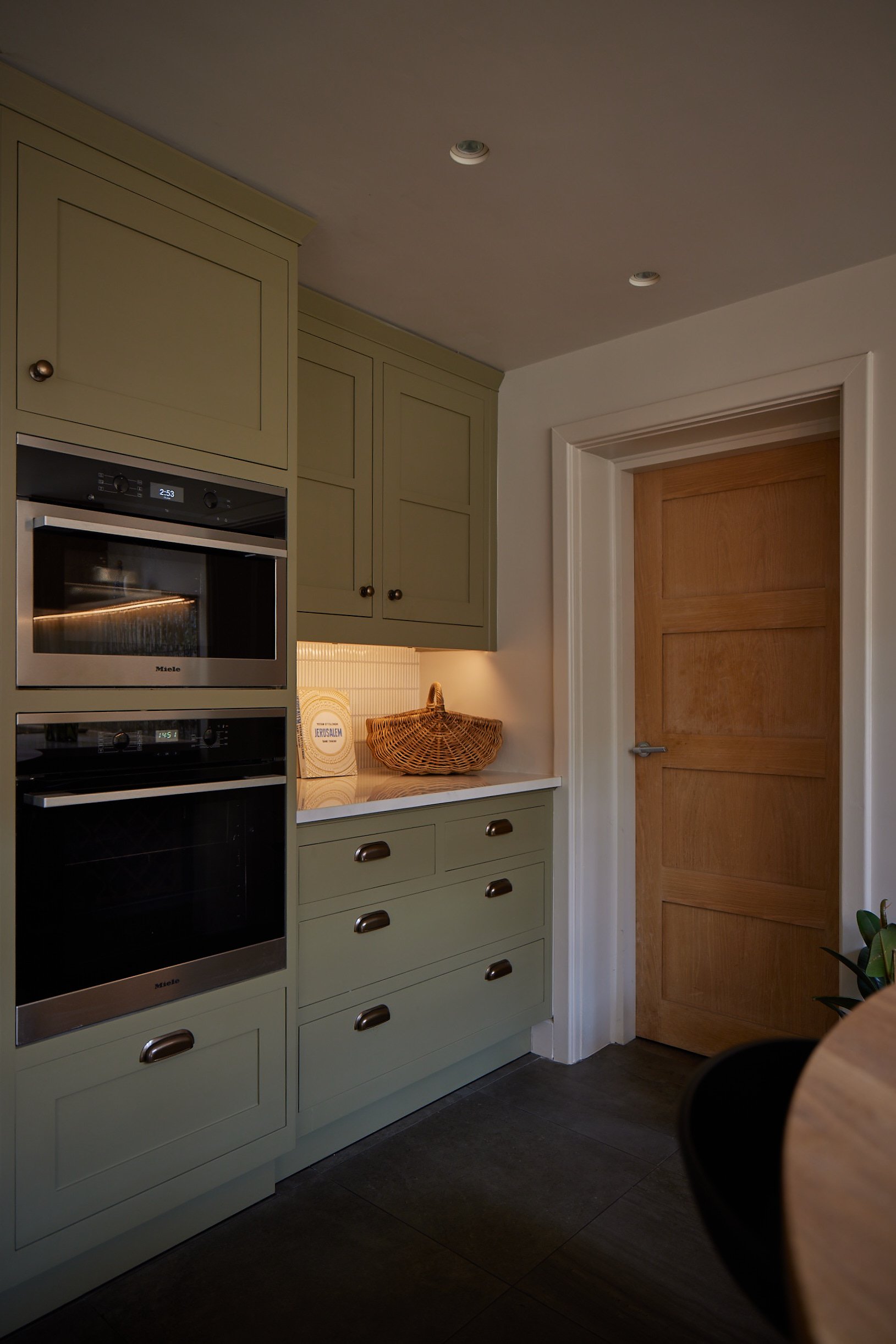An introduction to kitchen lighting design
The kitchen is at the heart of every home. Therefore, you shouldn't overlook the more intricate details when redesigning the space. Kitchen lighting design can change the entire mood of a room, so one must consider its aesthetic appeal as well as its functionality. To help transform your interior design dreams into a reality, we have created the ultimate guide to kitchen lighting design, covering everything from the psychological impact of lighting temperatures to the different types of light fixtures.

Light Temperature
Those eager to start redesigning their kitchen must first reflect on how lighting impacts a space, on both an aesthetic and psychological level. Our circadian rhythm influences our alertness and drowsiness throughout the day; although this is regulated internally by our hypothalamus, it can also be impacted by external factors such as light. In fact, the colours of light play a fundamental role in our daily functioning.
The spectrum of colour in natural light, ranging from warm tones in the mornings and evenings to cool tones during the day, sends signals to our brain and impacts our alertness levels. Therefore, your light temperature choice can impact how you feel in a space.
The kitchen is a practical room designed for cooking, so we recommend using cooler tones in your kitchen lighting design to ensure you feel as peppy and alert as possible.
Planning
Kitchen lighting design must be meticulously considered prior to the redesign of your kitchen. During the planning phase of your bespoke kitchen, your designer will start to consider electrical requirements. This is a great point in the process to elicit help for a kitchen designer to make technical decisions before any building work takes place. That way, your kitchen lighting design can be built into your architectural plans to ensure design ideas are feasible, reducing the risk of potential disappointment in the future.
Best Lighting for Kitchens
Well-designed lighting is versatile, combining a variety of lighting strategies, so the space is well-lit at all times of the day. The three main types of lighting include:
Ambient/General Lighting
This lighting type creates a base level of light to illuminate the space during the day and night. Ambient lighting should be evenly cast from the room's ceiling, using light fixtures such as pendant lights, recessed lighting, chandeliers, and flush mounts. We recommend installing a dimmer switch so you can adjust the light levels throughout the day.
Task Lighting
Created using puck lights and spotlights, this type of lighting illuminates areas of the kitchen that may not be adequately reached by ambient lighting. For example, cabinets and work surfaces may need additional illumination to increase their functional purposes.
Accent/Feature Lighting
Often considered the most exciting lighting type, accent lighting is predominantly used for decorative purposes to create a truly elegant and unique design. This lighting helps elevate a space by highlighting specific features such as artwork. To achieve this purpose, accent lighting typically requires higher wattage compared to more traditional lighting options.
Types of Lighting Fixtures
You can really elevate your kitchen lighting design with additional lighting fixtures. The pieces below can act as focal points in your room, introducing an element of intrigue or elegance into any space:
Handrail Lighting
The channel beneath the worktop can be illuminated using LED strip lights. Often, this technique is used around kitchen islands to create a striking focal point.
Internal Cabinet Lighting
If you have large cabinets, it can be difficult to see all the items stored inside. We suggest using internal cabinet lighting to mitigate this challenge and add a touch of excitement to your kitchen space. Using a sensor, this lighting is activated when the cabinet door is opened; therefore, no additional light switches are required.
Integrated Shelf Lighting
This type of light fixture could be the glamorous addition you need to elevate the look of your drinks cabinet. The fixture illuminates objects on each shelf of a cabinet, drawing guests' attention to prized pieces of kitchen furniture.
Shadow Gap Lighting
A shadow gap or shadow line is a small, intentional space between furniture and a wall. LED lighting can be integrated within the shadow gap to enhance its splendour and create a striking effect.
The right kitchen lighting design will beautifully illuminate your bespoke kitchen, whilst maximising the space and determining the mood of the room. From hosting celebrations and cooking for occasions to those late-night conversations accompanied by wine, well-designed kitchen lighting will create the perfect space for you and your family.
About the Author
Sam Boyes
Sam has worked in electrical, furniture and spatial design for over a decade. He brings a wealth of ideas and experience, setting the tone of a team that really cares about creating the most long-lasting and quality solution to whatever challenge is presented to them. Sam’s attention to detail, holistic approach to design, and efficient project management sets Boyes Design apart.





